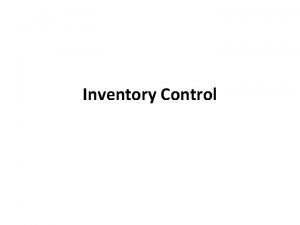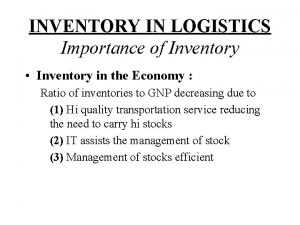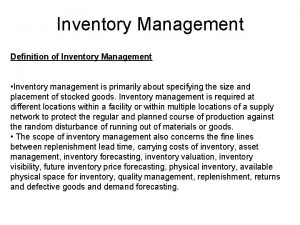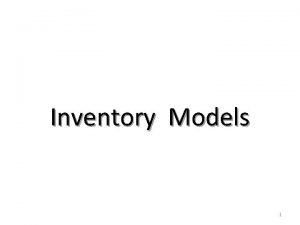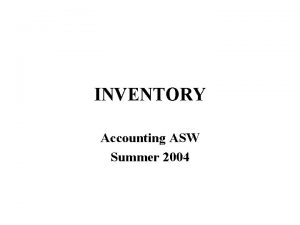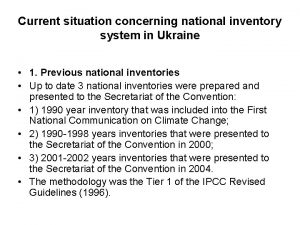1 Issues concerning the Inventory 2 Issues concerning
















- Slides: 16

1. Issues concerning the Inventory 2. Issues concerning Gases 3. Site considerations 4. Construction Issues 5. Waste Packaging and Repository Components 6. Chemistry and Contamination 7. Plutonium and Uranium 8. Biota – living things, including micro-organisms 9. The limitations of further research 10. Timescales 11. Methodology of Risk Prediction 12. Process Concerns www. nuclearwasteadvisory. co. uk

Look at four of the 101 issues. No. 6: The need to allow the release of hydrogen gas which is contrary to the need to provide “barriers” to radionuclides. No. 37: Work on container failure, specifically corrosion rates of steel and copper, is required; No. 68: Colloids – there are considerable research gaps as far as radionuclides other than uranium are concerned; No. 77: The data used to predict radionuclide take up by solid surfaces is known to be wrong; www. nuclearwasteadvisory. co. uk

www. nuclearwasteadvisory. co. uk

No. 6: the need to allow the release of hydrogen gas which is contrary to the need to provide “barriers”. EC’s Joint Research Centre (JRC) it is not clear whether: “. . . overpressure could result in fractures opening which then would provide fast migration pathways”. (Page 20) but “. . . significant amounts of hydrogen can be produced in a repository” EA: “It may therefore be necessary to design the (Engineered Barrier System) specifically to allow gas pressures to disperse. . . ” www. nuclearwasteadvisory. co. uk

RWMD’s view regarding build-up of pressure: Gas “. . . could migrate away from a GDF in higher strength rocks without developing a significant overpressure. In contrast, in lower strength sedimentary rocks or evaporites it would be less easy for a gas phase to migrate through the host rock, and the pressure in the GDF could increase. ” In some clays & evaporites, there may be insufficient groundwater to facilitate the generation of the gas in the first place. www. nuclearwasteadvisory. co. uk

But – if you deal with the potential for overpressurisation by allowing hydrogen to escape are you then providing a pathway for radioactive gases? Carbon dioxide and methane gases – which have incorporated radioactive Carbon-14 – could follow the same pathways as hydrogen. RWMD hopes this carbon-14 would be held underground due to a so-called ‘carbonation’ reaction with repository cement. But the Environment Agency has queried the extent to which such a reaction would take place. www. nuclearwasteadvisory. co. uk



The Generic Post Closure Safety Assessment Document says because the gas issue: “. . . would be specific to both a site and the design of a GDF. [RWMD will] defer any detailed modelling of gas migration until after a site has been selected. This is consistent with guidance from regulators. ” EA said it wanted RWMD to focus on “. . . key gas transport questions that need to be addressed to support a site selection and characterisation process. ” www. nuclearwasteadvisory. co. uk

No. 37: work on container failure, specifically corrosion rates of steel and copper, is required. The EC JRC says: although there has been extensive research on the behaviour of steel and copper in various repository types more work is needed on processes which determine the rate of corrosion and the behaviour of corrosion products. www. nuclearwasteadvisory. co. uk

The Copper Controversy “According to a current concept, copper canisters of thickness 0. 05 m will be safe for nuclear waste containment for 100, 000 years. [Hultquist et al] show that more than 1 m copper thickness might be required for 100, 000 years durability. ” If proven - cost and availability issues alone would render the entire disposal concept unviable. www. nuclearwasteadvisory. co. uk

RWMD’s report last year on the corrosion performance of canister materials simply said: “. . . these claims have been contested and are the subject of ongoing studies. “ The Swedish NGO office for Nuclear Waste Review (MKG) has expressed surprise at the choice of consultant for this report “. . . since he for so many years has been strongly intertwined in promoting copper as a canister material. ” Clearly much more research is required before a safety case using copper containers can be given credibility. www. nuclearwasteadvisory. co. uk

No. 68: Colloids – there are considerable research/knowledge gaps as far as radionuclides other than uranium are concerned. A colloid is a substance microscopically dispersed evenly throughout another substance e. g. Fat globules in milk They can bind with radionuclides and ‘carry’ them within flowing groundwater. Most experiments done with uranium, which means: “. . . there are still considerable knowledge gaps as far as the other elements are concerned”. (EC JRC) www. nuclearwasteadvisory. co. uk

No. 77: the data used to predict radionuclide take up by solid surfaces is known to be wrong. This concerns the process known as “Sorption” which is the take-up radionuclides by solid surfaces. Preliminary safety assessments have used a chemical retardation factor – the K d value in equations. But more sophisticated computer modelling suggests that using the Kd approach does not provide a good approximation of contaminant transport and can result in significant errors. www. nuclearwasteadvisory. co. uk

EC JRC – to get a completely accurate measure of retardation you need to do a calculation which is extremely complex – but the repository performance assessments need relatively simple models. The RWMD appear to be confident the NEA Sorption Project can come up with a hybrid model which is reasonable compromise between an overly complex sophisticated sorption model and the simple Kd approach. Illustrates complexities involved in developing a GDF Safety Case. How many other models have to be “dumbed down”? www. nuclearwasteadvisory. co. uk

Conclusions Only looked at 4 of 101 issues. Gives an idea of full extent of work required A myriad of complex interlocking and interdependent issues Firmly believe the RWMD’s work and the interests of communities is best served by rigorous external analysis to enhance confidence and highlight uncertainties. www. nuclearwasteadvisory. co. uk
 Quá trình desamine hóa có thể tạo ra
Quá trình desamine hóa có thể tạo ra Sự nuôi và dạy con của hươu
Sự nuôi và dạy con của hươu điện thế nghỉ
điện thế nghỉ Các châu lục và đại dương trên thế giới
Các châu lục và đại dương trên thế giới Các loại đột biến cấu trúc nhiễm sắc thể
Các loại đột biến cấu trúc nhiễm sắc thể Biện pháp chống mỏi cơ
Biện pháp chống mỏi cơ Bổ thể
Bổ thể Phép trừ bù
Phép trừ bù Thiếu nhi thế giới liên hoan
Thiếu nhi thế giới liên hoan Vẽ hình chiếu vuông góc của vật thể sau
Vẽ hình chiếu vuông góc của vật thể sau Chúa sống lại
Chúa sống lại Một số thể thơ truyền thống
Một số thể thơ truyền thống Hệ hô hấp
Hệ hô hấp Các số nguyên tố là gì
Các số nguyên tố là gì Tư thế ngồi viết
Tư thế ngồi viết Cong thức tính động năng
Cong thức tính động năng Tỉ lệ cơ thể trẻ em
Tỉ lệ cơ thể trẻ em























